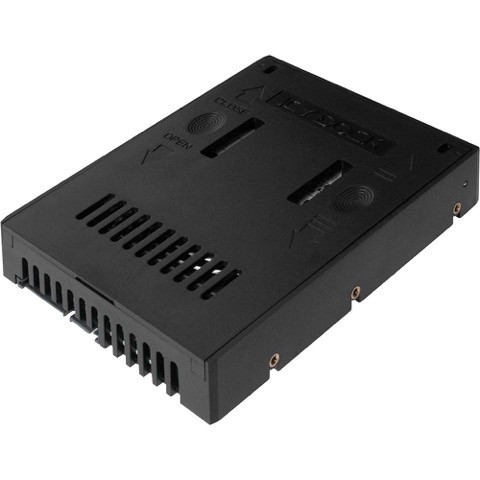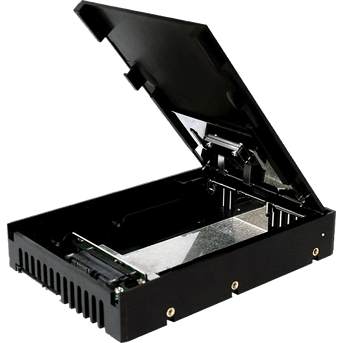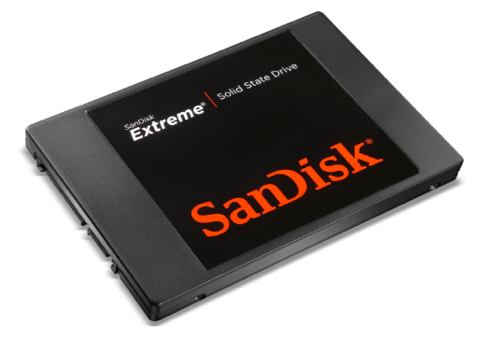December 2012
Install SSD in Mac Pro
07/12/12 20:59 Filed in: Computer
My 2008 Mac Pro has seemed to get slower over the years after three upgrades of Mac OSX from 10.5 Leopard to 10.8 Mountain Lion. Each of these was an upgrade without starting from a fresh reformatted hard drive. I decided that I was going to do a fresh system rebuild and also install an SSD (Solid State Drive) at the same time. I contemplated configuring the drive as a fusion drive which Apple supports in OSX 10.8 and ships in many of the new systems. With a fusion drive, an SSD is configured with a regular hard disk (HD) to form one logical volume. Then OSX would manage this volume to keep the most active files on the SSD portion and move unused files to the slower HD. I started out to do this but had problems with mounting the volumes during the process. I decided to clean up my files and reduce the active user and systems files to fit on the SSD instead.
My Mac Pro has 4 drive bays and had 3 - 1 TB HDs with OSX files and one 160GB drive with Bootcamp and Windows 7. I work off one of the main 1 TB drives and use the other 2 for backups. In updating the system, I swapped one of the 1 TB drives for a 240 GB SSD. My main issue was how to physically mount the SSD since it is a 2 1/2 inch form factor vs the drive bays which were for 3 1/2 inch drives. In addition the drive sleds on which the drives are mounted attached to the top of the drives and not the sides. The drive sleds allow the drives to quickly taken out and swapped without the use of any cables. Since I did not have a drive sled that would mount the 2 1/2 inch SSD, I contemplated putting the SSD in the extra DVD drive bay and running SATA cables to the mother board where there are two extra SATA ports. I may still do that to allow for mounting of all 4 3 1/2 inch drives.
Instead, a little research revealed a converter called the Icy Dock available at the local MicroCenter computer store. The Icy Dock SSD & SATA HDD Converter, Model NB882SP-1S-1B, is shown in the following pictures. The converter is essentially an enclosure that has a connector for the SSD inside and presents a standard SATA HDD connector on the outside. The top cover flips up, the SSD is inserted and the spring loaded cover forces the SSD into position with the connector inside. There are no screws required and the converter box acts just like a larger HD. The converter is attached to the Mac Pro drive sled just like a regular drive. Note the other picture shows the SanDisk Extreme 240 GB SSD.
After cleaning up files and moving stuff out of the user, library and applications directories to other areas of the 1 TB main drive, I installed OSX 10.8.2 on the SSD. I then rebooted on the new SSD and used the OSX migration tools to move the user account over along with the applications and system library. The whole process took a couple of days of cleanup where I deleted 100 GB of unneeded files. It then took less than 2 hours to move about 200 GB to the SSD leaving about 30 GB empty for further growth. I didn’t get the exact time since I went to lunch with a friend and it was done when I came back.
The system is much faster now than it was before. I did some tests just for restarting the system. The old system would take about 3:24 minutes to restart with about 136 seconds of this time after the startup chime. Restarting off the SSD would take about 1:35 minutes with about 25 seconds after the chime. Restart time is more important than just a raw startup time since I rarely shut down the system completely. Actually, I rarely restart either. Note that the time from clicking the restart button to the chime was the same in either case, about 1:10 minutes, and doesn’t seem to depend much on the drive speed. So overall the SSD seems to be about 5 times faster than the HD in loading the system. 136/25 = 5.44.
I suspect that some of my speed improvement was from cleaning up files and splitting the files over two volumes, but glad to have the increase either way. I plan to do some more testing of applications as well, but there is a definite speed up of 2 to 3 times.



My Mac Pro has 4 drive bays and had 3 - 1 TB HDs with OSX files and one 160GB drive with Bootcamp and Windows 7. I work off one of the main 1 TB drives and use the other 2 for backups. In updating the system, I swapped one of the 1 TB drives for a 240 GB SSD. My main issue was how to physically mount the SSD since it is a 2 1/2 inch form factor vs the drive bays which were for 3 1/2 inch drives. In addition the drive sleds on which the drives are mounted attached to the top of the drives and not the sides. The drive sleds allow the drives to quickly taken out and swapped without the use of any cables. Since I did not have a drive sled that would mount the 2 1/2 inch SSD, I contemplated putting the SSD in the extra DVD drive bay and running SATA cables to the mother board where there are two extra SATA ports. I may still do that to allow for mounting of all 4 3 1/2 inch drives.
Instead, a little research revealed a converter called the Icy Dock available at the local MicroCenter computer store. The Icy Dock SSD & SATA HDD Converter, Model NB882SP-1S-1B, is shown in the following pictures. The converter is essentially an enclosure that has a connector for the SSD inside and presents a standard SATA HDD connector on the outside. The top cover flips up, the SSD is inserted and the spring loaded cover forces the SSD into position with the connector inside. There are no screws required and the converter box acts just like a larger HD. The converter is attached to the Mac Pro drive sled just like a regular drive. Note the other picture shows the SanDisk Extreme 240 GB SSD.
After cleaning up files and moving stuff out of the user, library and applications directories to other areas of the 1 TB main drive, I installed OSX 10.8.2 on the SSD. I then rebooted on the new SSD and used the OSX migration tools to move the user account over along with the applications and system library. The whole process took a couple of days of cleanup where I deleted 100 GB of unneeded files. It then took less than 2 hours to move about 200 GB to the SSD leaving about 30 GB empty for further growth. I didn’t get the exact time since I went to lunch with a friend and it was done when I came back.
The system is much faster now than it was before. I did some tests just for restarting the system. The old system would take about 3:24 minutes to restart with about 136 seconds of this time after the startup chime. Restarting off the SSD would take about 1:35 minutes with about 25 seconds after the chime. Restart time is more important than just a raw startup time since I rarely shut down the system completely. Actually, I rarely restart either. Note that the time from clicking the restart button to the chime was the same in either case, about 1:10 minutes, and doesn’t seem to depend much on the drive speed. So overall the SSD seems to be about 5 times faster than the HD in loading the system. 136/25 = 5.44.
I suspect that some of my speed improvement was from cleaning up files and splitting the files over two volumes, but glad to have the increase either way. I plan to do some more testing of applications as well, but there is a definite speed up of 2 to 3 times.


